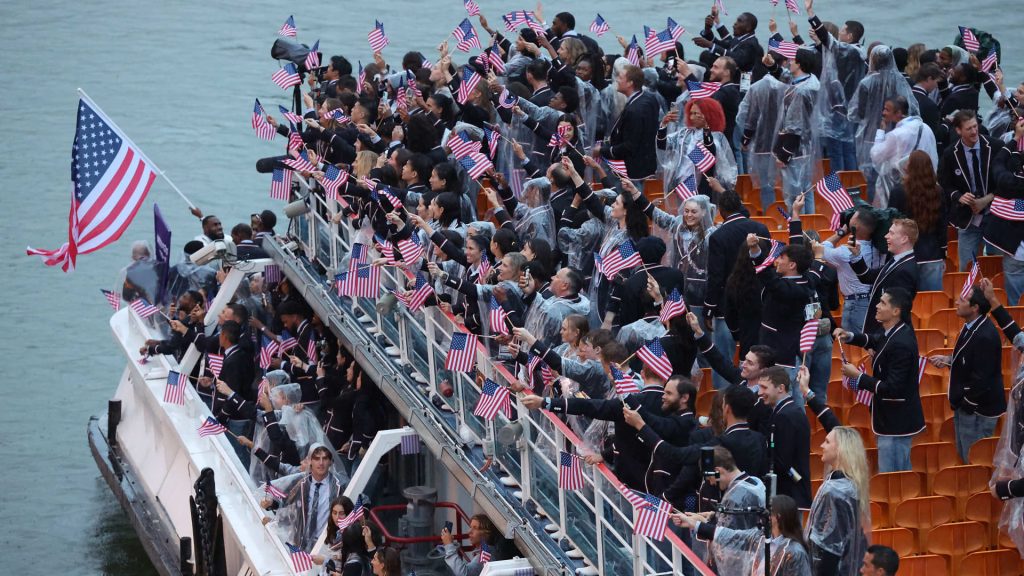The United States Olympic and Paralympic Committee (USOPC) has announced a groundbreaking initiative aimed at supporting Olympic and Paralympic athletes financially. In a historic move, a $100 million grant has been pledged by Ross Stevens, founder and CEO of Stone Ridge Holdings Group, to assist athletes as they navigate the financial challenges associated with training and competing. This substantial investment acknowledges the sacrifices made by athletes who often forego traditional career paths in pursuit of Olympic glory, providing a long-term financial support system to benefit those participating in upcoming Olympic Games.
| Article Subheadings |
|---|
| 1) Financial Challenges Faced by Athletes |
| 2) A Groundbreaking Gift from Ross Stevens |
| 3) Distribution of the Funds |
| 4) The USOPC’s Unique Funding Model |
| 5) Long-Term Impact on Athletes’ Futures |
Financial Challenges Faced by Athletes
Olympic and Paralympic athletes often face significant financial hurdles due to the extensive costs associated with training and competition. The commitment required for such elite sports often demands unwavering dedication, which can lead to the postponement of education and traditional career opportunities. Many athletes may miss out on several years of income potential, making it difficult to build a stable financial future. The USOPC’s recent announcement shines a light on these struggles, amplifying awareness around the financial burdens faced by many competitors, including those in disciplines that don’t attract major sponsorship deals.
A Groundbreaking Gift from Ross Stevens
The transformative grant from Ross Stevens, who is noted for his philanthropic efforts alongside his executive accomplishments, marks the largest donation in the USOPC’s history. Stevens’ contribution reflects a growing recognition of the challenges that athletes endure and aims to alleviate some of the financial pressures they face. His generous donation is also seen as an innovative step towards fostering a more sustainable future for athletes who aspire to compete on the world stage. The acknowledgment of the financial difficulties intertwined with the quest for Olympic success demonstrates a shift in how resources can be directed towards athlete welfare.
Distribution of the Funds
The structure of the distribution of funds is designed with both immediate and long-term considerations in mind. Athletes participating in the 2026 Olympics in Milan, as well as those competing in subsequent events through at least 2032, will each receive a total of $200,000. However, this support does not begin immediately; instead, the first $100,000 becomes accessible only 20 years after the games, or when the athlete reaches the age of 45, whichever comes later. The funds will be distributed over a period of four years and can be leveraged for various personal endeavors, such as launching a business or supporting family needs. This frugal approach aims to execute a thoughtful strategy towards athlete financial planning post-retirement, emphasizing sustainable living beyond the Olympic spotlight.
The USOPC’s Unique Funding Model
A unique aspect of the USOPC is that it relies entirely on private funding, unlike many nations that receive government support to sustain their athletes. This distinction shapes how U.S. Olympic athletes are funded. While some countries offer direct financial rewards to medalists — with payouts potentially exceeding $750,000 for gold medalists — U.S. athletes typically engage in extensive fundraising efforts to amass funds for their training and expenses. This approach reflects the broader landscape of Olympic funding, revealing how the U.S. model prioritizes private sector involvement over governmental support, which can be a double-edged sword for the athletes involved.
Long-Term Impact on Athletes’ Futures
The long-term implications of this funding endeavor promise significant changes for U.S. athletes. While some elite athletes manage to secure lucrative endorsements, the vast majority do not experience the same financial windfall. This new initiative for financial support seeks to alter the narrative surrounding athlete financial stability, providing a safety net that can uplift athletes both during and after their competitive careers. As the USOPC emphasizes the importance of financial literacy and management, this initiative could cultivate a generation of athletes who not only excel in their sport but also thrive financially in their post-Olympic lives.
| No. | Key Points |
|---|---|
| 1 | USOPC announces a historic $100 million grant for athletes. |
| 2 | Funds are aimed at supporting athletes’ financial needs long-term. |
| 3 | Eligible athletes will receive $200,000 each, distributed over time. |
| 4 | The USOPC is uniquely funded entirely through private donations. |
| 5 | Long-term financial support aims to stabilize athletes’ futures after their careers. |
Summary
The $100 million grant from Ross Stevens represents a pivotal moment for the financial landscape of U.S. Olympic athletes. By understanding and addressing the economic realities they face, the USOPC is not only investing in their present endeavors but is also laying a foundation for their future. This initiative promises to reshape how athletes plan their careers and finances, potentially influencing Olympic participation and performance in the years to come.
Frequently Asked Questions
Question: How will the financial support be beneficial for athletes?
The support will provide Olympic and Paralympic athletes with the financial resources to pursue their sports without the overwhelming stress of economic instability. The funds can be utilized for personal ventures, allowing them to establish a stable future.
Question: Is the funding provided immediately?
No, the initial funds will not be accessible until 20 years post-Games or when the athlete turns 45. This delayed access is designed to encourage long-term financial planning.
Question: How does the USOPC funding model compare to other countries?
Unlike many nations that receive governmental support, the USOPC operates entirely on private funding, which significantly influences how athletes are financed and supported throughout their careers.
